Horus, the Egyptian sky god, is a fascinating figure in ancient Egyptian mythology. As the national guardian deity of the ancient Egyptians, Horus played a crucial role in their religious beliefs and cultural practices.
Origins of Horus
The origins of Horus unfold in a tale that weaves together themes of love, betrayal, and the eternal struggle between order and chaos.
According to mythological accounts, Horus was born to Osiris, the god of the afterlife, and Isis, the goddess of magic and healing.

The story begins with Osiris, a wise and just ruler beloved by the Egyptian people.
His brother Set, driven by jealousy and ambition, grew resentful of Osiris’ popularity and sought to take his place.
In an act of extreme treachery, Set murdered Osiris, dismembered his body, and scattered the pieces across Egypt.

Devastated by the loss of her husband, Isis embarked on a quest for justice.
She tirelessly searched for each part of Osiris’ body, gathering them one by one and reassembling them with her powerful magic.
Through her unwavering determination and love, Isis managed to bring Osiris back to life for a short time, enabling them to conceive a child.
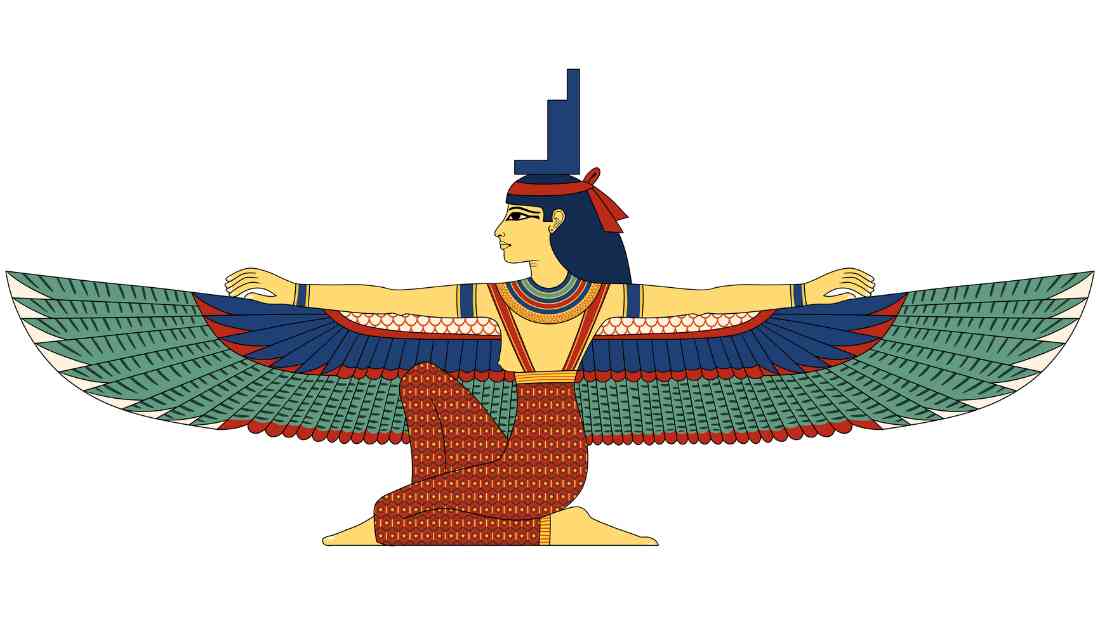
Horus, the son of Osiris and Isis, was born amidst the turmoil of their divine struggle.
He grew up under the watchful eye of his protective mother, who instilled in him a sense of justice and a desire for vengeance against Set.
The Eternal Struggle Between Order and Chaos
The conflict between Horus and Set became the embodiment of the eternal struggle between order and chaos in Egyptian cosmology.
It represented the battle between Ma’at, the principle of harmony and balance, and Isfet, the forces of disorder and destruction.
Horus sought to avenge his father’s death and restore rightful order to Egypt by reclaiming his father’s rightful place as king.
In Egyptian mythology, the story of Horus and Set involves a conflict between the two deities, with Horus eventually emerging victorious.

According to various mythological accounts, Horus defeated Seth in a series of battles.
In “The Contendings of Horus and Set,” a significant text in Egyptian mythology, Horus is depicted as triumphing over Set in battle.
The conflict between Horus and Set is portrayed in different forms across various sources.
In some versions, the battles between the two gods involve transformations into animals, such as hippos or other aquatic creatures, as they fought in the River Nile.
While the specific details may vary, the prevailing theme is that Horus emerged as the victor in the struggle against Set.
This victory symbolized the triumph of order over chaos and the restoration of rightful kingship.
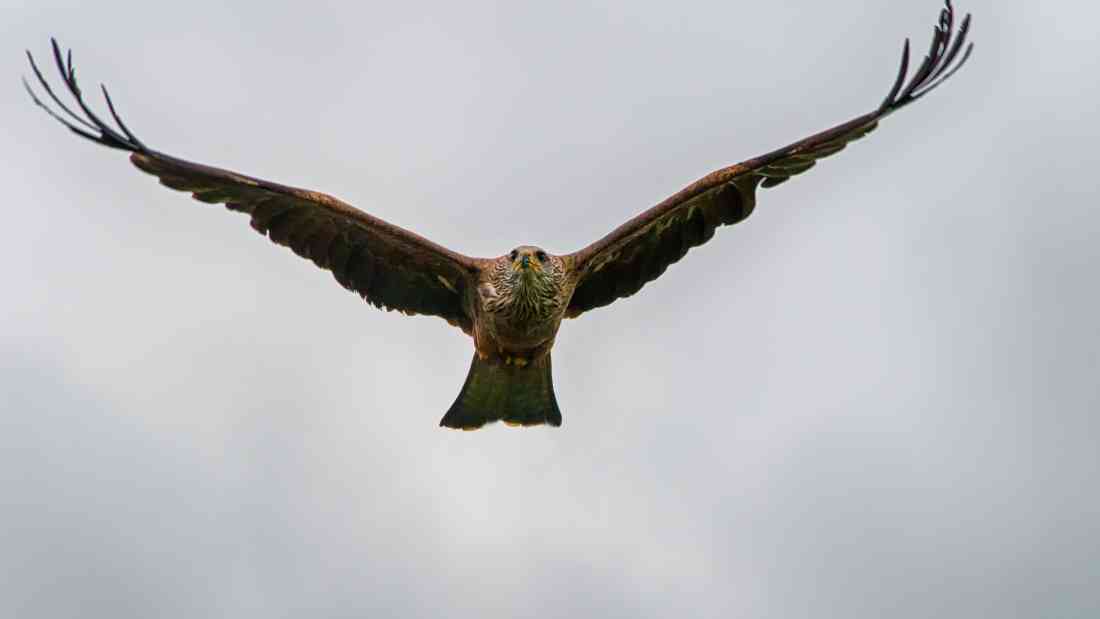
Different Manifestations of the Egyptian God Horus
Horus was associated with various manifestations that represented the multifaceted nature of his divinity and the various roles he played in ancient Egyptian mythology and religious beliefs.
Each representation highlighted specific aspects of his power, authority, and association with celestial and earthly realms.
Horus the Child (Harpocrates)
This manifestation of Horus depicted him as a young child, often shown sitting on the lap of his mother, Isis.
Horus the Child symbolized the vulnerability and innocence of youth, while also embodying the divine lineage and potential for greatness.
Horus the Falcon
One of the most common representations of Horus, he was depicted with the head of a falcon and the body of a man.
As the Falcon-headed Horus, he personified his association with the avian realm, representing keen vision, swiftness, and strength.
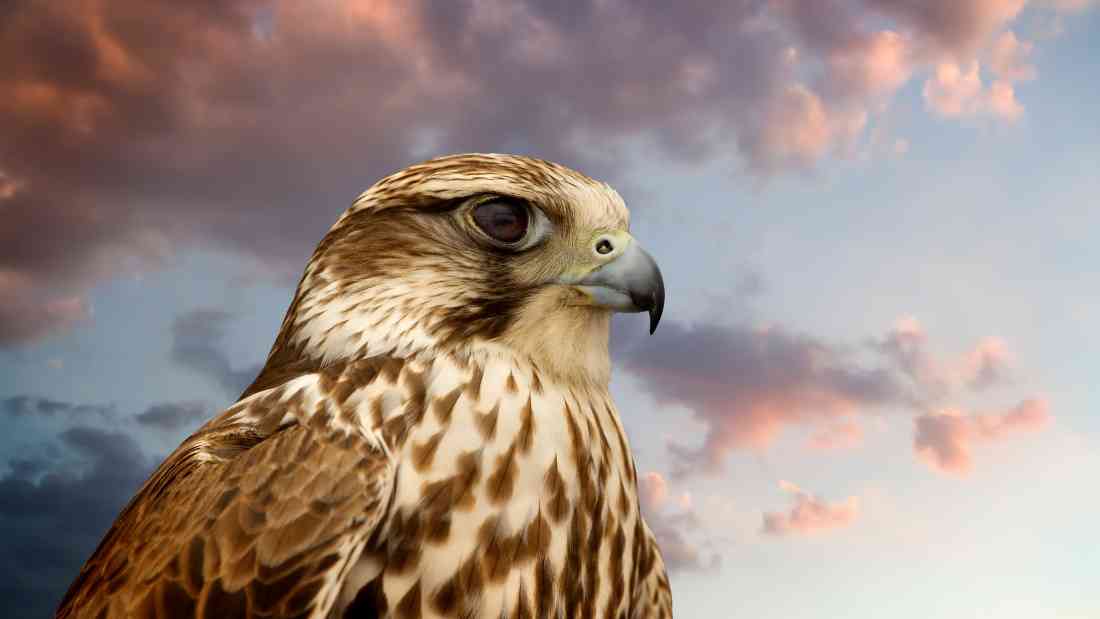
Horus the Elder (Haroeris)
This form of Horus portrayed him as a mature deity, sometimes depicted wearing the double crown of Upper and Lower Egypt.
As Horus the Elder, he represented wisdom, kingship, and the rightful rule of the pharaohs.
This manifestation emphasized his role as the protector of Egypt and the divine authority that ensured the prosperity and harmony of the kingdom.
Horus as the Sun God (Ra-Horakhty)
In this manifestation, Horus was associated with the sun and merged with the sun god Ra, becoming Ra-Horakhty.
This form of Horus represented the solar aspect of his divinity, connecting him to the life-giving and illuminating powers of the sun.
Horus as Ra-Horakhty embodied the celestial forces that governed the universe.
Horus the Avenger (Horus the Sky-Bearer)
This manifestation of Horus emphasized his role as a warrior and champion of justice.
Horus the Avenger was depicted with the head of a falcon and the body of a man, wearing the double crown of Egypt and holding weapons such as a spear or bow and arrows.
He was believed to protect the pharaohs and ensure the defeat of Egypt’s enemies.
Symbolism and Depiction of Horus the Falcon
The symbolism and depiction of Horus in ancient Egyptian mythology are rich and layered, reflecting his multifaceted nature and significance as the sky god.
Horus is most commonly portrayed as a falcon-headed man or as a falcon itself, emphasizing his connection to the avian realm and the celestial spheres.
The choice of the falcon as his animal form holds deep symbolism.
Falcons were revered in ancient Egypt for their keen eyesight, swiftness, and grace. These attributes were seen as reflections of Horus’ divine qualities and his ability to soar above earthly matters, overseeing the world from the heavens.
One of the most notable symbols associated with Horus is his eyes.
His right eye, known as the “Eye of Ra,” represents the sun. It symbolizes power, clarity, and protection.

The left eye, known as the “Eye of Horus” or the “Moon Eye,” represents the moon and embodies intuition, healing, and magic.

The duality of these eyes reflects Horus’ connection to both heavenly bodies and his role as a mediator between the celestial and earthly realms.
Another prominent element of Horus’ depiction is the pschent, a distinctive double crown that symbolizes his association with kingship and sovereignty.
The pschent is a combination of the red Deshret crown representing Lower Egypt and the white Hedjet crown symbolizing Upper Egypt.
This fusion of crowns represents the unification and balance of the two regions under the divine rule of Horus.
The pschent serves as a visual representation of his authority and his role as the protector and patron of the pharaohs.

Furthermore, Horus is often depicted with other significant symbols such as the ankh, the symbol of life, which underscores his role as a life-giver and a deity associated with resurrection and renewal.

He may also be shown holding a flail and a crook, symbols of kingship and divine authority, emphasizing his role as a guardian and protector of Egypt.
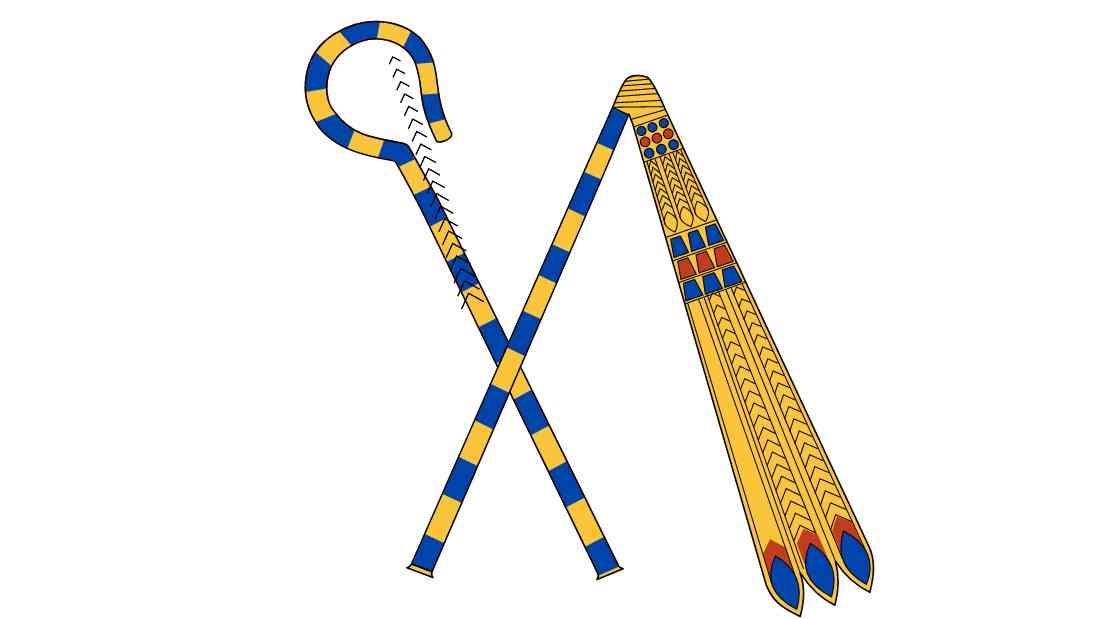
The rich symbolism and intricate depiction of Horus in ancient Egyptian art reflect the importance of this deity in their religious and cultural beliefs.
These visual representations served as reminders of the cosmic order, the power of the pharaohs, and the divine forces that governed the world.
The Role of the Egyptian God Horus
One of the primary roles of the god Horus was to safeguard Egypt from external forces seeking to invade or destabilize the kingdom.

The Egyptian God Horus – A Fierce Warrior and Protector
He was believed to be a fierce warrior, defeating enemies and ensuring the safety and security of the land.
This protective aspect of Horus made him a beloved and revered deity among the Egyptian people, who looked to him for guidance and assistance in times of danger.
The Egyptian God Horus – The Ideal Pharoah
Beyond his role as a protector, Horus was also associated with kingship and the divine right of the pharaohs to rule.
He represented the ideal pharaoh, embodying qualities such as wisdom, justice, and strength.
The association between Horus and the pharaohs further legitimized their authority, as they were believed to be the earthly manifestations of Horus.
This divine link between Horus and the pharaohs reinforced the notion of a harmonious cosmic order, with the pharaoh acting as the intermediary between the gods and the people.

The Egyptian God Horus – The Divine Mediator
Horus’ connection to the sky and celestial realms added another layer of significance to his role.
As a sky god, he represented the forces of nature, including the cycle of day and night.
Horus’ association with the sun and the moon symbolized his ability to traverse and regulate the cosmic realms.
This celestial aspect of Horus highlighted his role as a divine mediator, overseeing and maintaining the balance and harmony of the universe.
The Egyptian God Horus – Assisting the Dead
In addition to his protective and cosmic functions, Horus also played a pivotal role in Egyptian mythology regarding the afterlife.
He assisted the deceased in their journey to the realm of the gods, ensuring their safe passage and providing them with guidance and protection.

Worship and Rituals Dedicated to Horus
The worship of Horus was deeply ingrained in ancient Egyptian society, with temples dedicated to his cult spread across the land.
These temples served as sacred spaces where priests and devotees could connect with the divine presence of Horus and seek his blessings and protection.
Offerings and Prayers to the Egyptian God Horus
One of the primary ways in which worshippers honored Horus was through offerings.
Devotees would bring gifts such as food, flowers, incense, and precious items to present to the deity.
These offerings were seen as a way to show gratitude, seek favor, and establish a reciprocal relationship with Horus.
The priests, acting as intermediaries between the people and the gods, would perform rituals to present these offerings and convey prayers on behalf of the worshippers.

Rituals and Ceremonies Honoring the Egyptian God Horus
Temple rituals and ceremonies played a vital role in worshiping Horus.
These elaborate practices were performed by the priests to invoke the presence and blessings of the deity.
The rituals often involved purification rites, processions, hymns, dances, and dramatic reenactments of mythological stories associated with Horus.
One of the most significant ceremonies was the daily ritual of opening and closing the temple doors.
This symbolic act represented the awakening and resting of Horus, allowing him to interact with the mortal realm during the day and return to his celestial abode at night.
These rituals reinforced the cosmic order and the interconnectedness of the divine and earthly realms.
Festivals and Celebrations Dedicated to the Egyptian God Horus
Various festivals and celebrations were held throughout the year to honor Horus.
One of the most renowned festivals was the “Feast of the Beautiful Reunion,” which commemorated the divine marriage of Horus with the goddess Hathor or his mother Isis, depending on the local tradition.
This festival brought together worshippers from different regions, fostering unity and religious devotion.
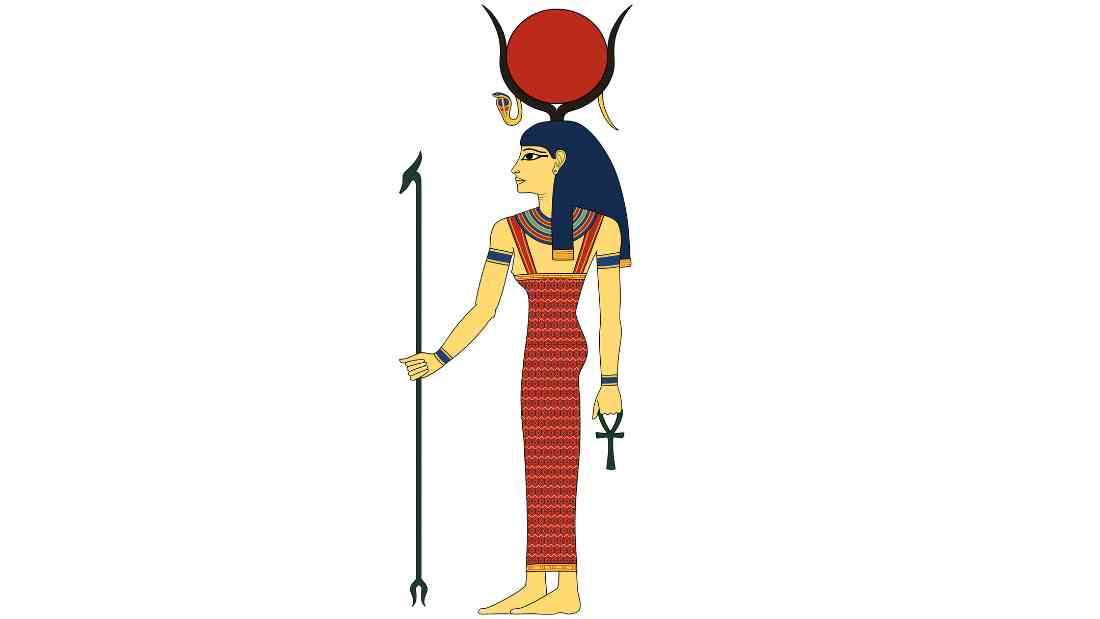
During these festivals, elaborate processions would take place, with priests carrying the sacred image of Horus in a ceremonial barque.
The procession would move through the temple grounds or even outside the temple, allowing the people to catch a glimpse of the deity and participate in the festivities.
Music, dance, and feasting were common during these celebrations, creating an atmosphere of joy and reverence.
Temples Dedicated to the Egyptian God Horus
Several temples across Egypt were dedicated exclusively to the worship of Horus. Each temple had its unique characteristics and significance within the local religious landscape.
These temples provided a focal point for religious devotion and played a crucial role in the religious and social fabric of ancient Egyptian society.
Through offerings, rituals, and celebrations, worshippers sought to establish a connection with Horus, invoking his protection, guidance, and blessings
Notable examples include:
The Temple of Edfu
Located in Upper Egypt, the Temple of Edfu is one of the best-preserved ancient Egyptian temples dedicated to Horus.
This grand structure was constructed over a long period, with different pharaohs contributing to its development.
The temple contains various chambers, halls, and sanctuaries where rituals and ceremonies honoring Horus were performed.

Kom Ombo Temple
Situated in Upper Egypt along the Nile, the Kom Ombo Temple is a unique double temple dedicated to both Horus and Sobek, the crocodile god.
This temple complex reflects the syncretic nature of ancient Egyptian religion, where deities from different cults were often merged or worshipped side by side.

Conclusion
In conclusion, the mythology of Horus held a significant place in ancient Egyptian culture and beliefs.
The concept of divine kingship, where the pharaohs were seen as the earthly manifestation of Horus, played a vital role in legitimizing royal authority and reinforcing the social hierarchy.
It provided a divine justification for the pharaohs’ right to rule and ensured the stability and prosperity of the kingdom.
Furthermore, Horus’ association with the celestial realms as a cosmic deity resonated with the ancient Egyptians’ worldview.
His role as a protector, both on a national and cosmic scale, instilled a sense of security and order in the minds of the people.
The cycles of day and night, overseen by Horus, symbolized the harmonious balance of nature and the interconnectedness of the divine and earthly realms.
Through his multifaceted roles, Horus embodied the ideals of kingship, protection, and cosmic order. The worship and rituals dedicated to him in temples across Egypt reflected the deep reverence and devotion that the ancient Egyptians held for this revered deity.

Frequently Asked Questions About The Egyptian God Horus
Horus is one of the most significant deities in ancient Egyptian mythology. He is usually depicted as a falcon-headed god and was associated with kingship, protection, and the sky.
Horus played several important roles in Egyptian mythology. He was seen as the son of Osiris and Isis, and his birth and life symbolized the eternal cycle of life, death, and resurrection. Horus was also considered the rightful heir to the throne of Egypt and represented the divine authority of the pharaohs.
The Eye of Horus, also known as the Wadjet eye, is a powerful symbol in ancient Egyptian mythology. It represents protection, health, and royal power. The Eye of Horus is often depicted as an eye with distinctive markings, which are believed to represent different fractions that add up to a whole.
Horus became associated with divine kingship through the mythology surrounding his parentage. According to the myth, Horus’s father Osiris was the rightful king of Egypt who was murdered by his brother Seth. Horus, as Osiris’s son, sought to avenge his father’s death and reclaim the throne, establishing the concept of the pharaohs as the embodiment of Horus on Earth.
Horus is often depicted with the head of a falcon, which symbolizes his association with the sky and keen vision. Other symbols associated with Horus include the double crown of Egypt, which represents his connection to the united kingdom, and the ankh, a symbol of eternal life and power.
Yes, Horus had different manifestations that represented various aspects of his divinity and role. Some of the notable manifestations include Horus the Child (Harpocrates), Horus the Falcon, Horus the Elder (Haroeris), and Horus as the Sun God (Ra-Horakhty).
Posts About the Egyptian Pantheon of Gods
The Pantheon of Ancient Egyptian Gods – A Comprehensive Guide
The Wrath of Montu – The Mythology of the Egyptian War God
Egyptian God Ammit – The Eater of Hearts in Ancient Egyptian Mythology
The Nightly Journey of Khonsu – The Ancient Egyptian God of the Moon
Ihy – The Joyful Ancient Egyptian God of Music
Min – The Ancient Egyptian God of Fertility
The Egyptian God Anubis – His Evolution from Son of Ra to Protector of the Dead
Unraveling the Mysteries of Babi – The Ancient Egyptian Baboon God
Ra, the Egyptian Sun God – Symbolism and Significance in Ancient Egyptian Culture
Sobek: The Ferocious Crocodile God of Ancient Egypt
The Enigmatic Mythology of Horus, the Egyptian Sky God
The Egyptian God Set – Protector of the Desert and Lord of Conflict
The Ancient Egyptian God Medjed: The Guardian of Osiris and the Afterlife
Anput, the Wife and Female Version of Anubis
Selket – The Scorpion Crowned Egyptian Goddess
Shu – The Egyptian God of Air, Wind, Peace and Lions
Hapi the Androgynous Ancient Egyptian God of the Nile
The Egyptian Sky Goddess Nut: Myth and Symbolism
The 42 Laws of Maat: The Moral Principles of the Ancient Egyptians
The Ancient Egyptian Goddess Mut: The Maternal Power in Egyptian Mythology
The Warrior Goddess: Neith in Ancient Egyptian Mythology
The God Bes: The Joyful Dwarf Deity in Ancient Egyptian Culture
The Egyptian Gods of Love: Hathor and Isis in Ancient Egyptian Mythology
Confronting the Serpent: The God Apep, the Nemesis of Ra in Egyptian Myth

